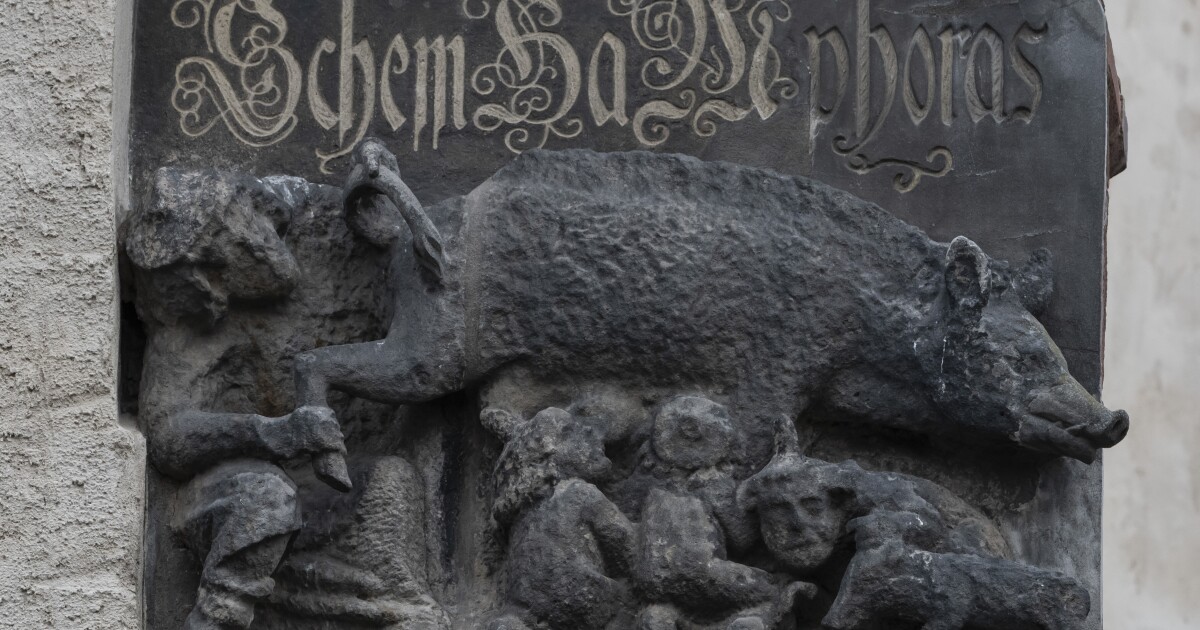

Germany’s top court ruled it will allow an antisemitic medieval display to stay on a church, marking another setback for Jews who seek the removal of the sculpture.
The Federal Court of Justice, Germany’s top appeals court, upheld rulings from lower courts that dismissed the case, saying there was no breach of the law in the St. Marien Church in Wittenberg, Germany, displaying the sculpture. The Jewish plaintiff in the case has fought a court battle for years to remove the 13th century “Judensau” or “Jew Sow” on the church, which depicts a rabbi holding the tail of a pig, an animal considered unclean in Judaism, as two Jewish children drink from the pig’s teats.
ONE DEAD AND 30 INJURED AFTER MAN DRIVES CAR INTO CROWD NEAR BERLIN CHURCH
The church displaying the Judensau had installed an information board and a bronze plaque under the antisemitic stone carving in 1988 to remember the 6 million Jews who died in the Holocaust. The court claimed the church transforming the stone carving into a memorial as a testimony to the Christian church’s anti-Jewish attitudes over the centuries was one way the church did not violate the law in displaying the carving, a statement from the court said.
The Central Council of Jews said it understood the court’s decision not to remove the sculpture, but it added that the explanatory display under it is not enough, with Council President Josef Schuster saying the church’s defamation of the Jews “must be a thing of the past once and for all.”
CLICK HERE TO READ MORE FROM THE WASHINGTON EXAMINER
The Judensau is one of about two dozen similar sculptures from the Middle Ages that are still displayed on churches around Germany and Europe.
Wittenberg, Germany, was also the town where Martin Luther, an influential German priest in the 1500s, nailed his theses challenging Catholicism to a church door in 1517, which led to the Protestant Reformation in Germany.





